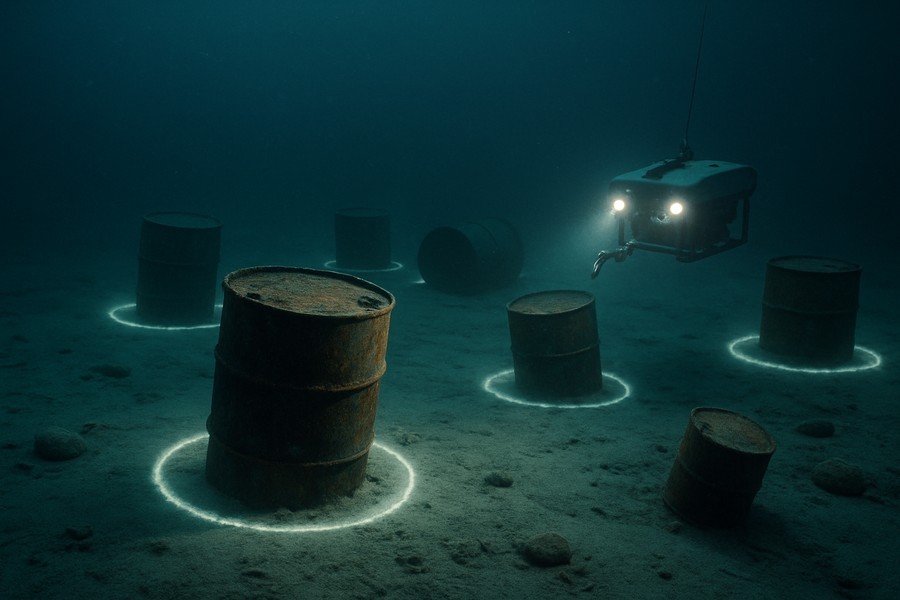
Unusual Glows Around Chemical Containers in Ocean Depths Puzzles Scientists
Over half a century ago, containers full of chemicals were discarded off the coast of Los Angeles. Now, they are surrounded by peculiar glowing rings—leading to many raised eyebrows and unanswered questions.
Initially, it was believed that the containers held the cancer-causing pesticide DDT, a theory based on knowledge that this substance was dumped in the area during the mid-20th century. However, the appearance of these peculiar halos around the containers suggested something else might be at play.
Cracking the Halo Mystery
A group of scientists, aboard an ocean research vessel, took a giant step toward solving this mystery. They managed to send a remote-controlled vehicle to collect samples from the seafloor, which had become as hard as concrete due to the leaked substances from the containers.
After studying the acquired samples, the researchers found that the DDT levels didn't increase the nearer they got to the barrels. This indicated that the containers weren't the source of the DDT contamination. So, the question remained, what was leaking from them?
Scientific Discoveries
The researchers came across microbial DNA in the samples, although not in large quantities. This DNA revealed that there was a very low diversity of bacteria in the sediment around the barrels. Interestingly, the existing microbes resembled the type of extremophiles found near hydrothermal vents—some of the most hostile environments in the ocean.
Furthermore, testing the pH of the samples yielded an unexpected result. The samples were found to have a pH of around 12, which is considered highly alkaline. This led the team to realize they were dealing with a caustic alkaline waste, not DDT.
Alkaline Waste and the Formation of Halos
“One of the by-products from the production of DDT was acid, and they didn't put that in the barrels. It makes you wonder: What was so bad that they decided to put it into barrels?” said the lead author of the study.
The mysterious halos formed as a result of a chemical reaction between the waste and seawater, yielding the mineral brucite. This led to the seafloor sediment becoming cement-like and highly alkaline, which reacted with seawater to form calcium carbonate deposits.
Revisiting the Environmental Catastrophe
This discovery shines a new light on the decades-long environmental disaster. While the contents of the barrels remain unknown, there is a better understanding of what to look for.
“DDT wasn’t the only thing dumped here. Our knowledge of what else might be down there is quite fragmented. We've mostly been looking for DDT, but no one thought of alkaline waste. We may need to expand our search,” the lead author added.
This study also elevates alkaline waste to the same level of concern as DDT in terms of pollutants persisting in marine environments. It was previously thought that alkaline waste would quickly dilute in seawater, but this is evidently not the case.
The Impact of the Chemical Dumping
The senior author of the study commented, “This adds to our understanding of the consequences of dumping these barrels. It’s shocking that after 50-plus years, we're still seeing these effects. We can’t determine the environmental impact without knowing how many of these barrels with white halos are out there, but it’s clear they’re having a localized effect on microbes.”
